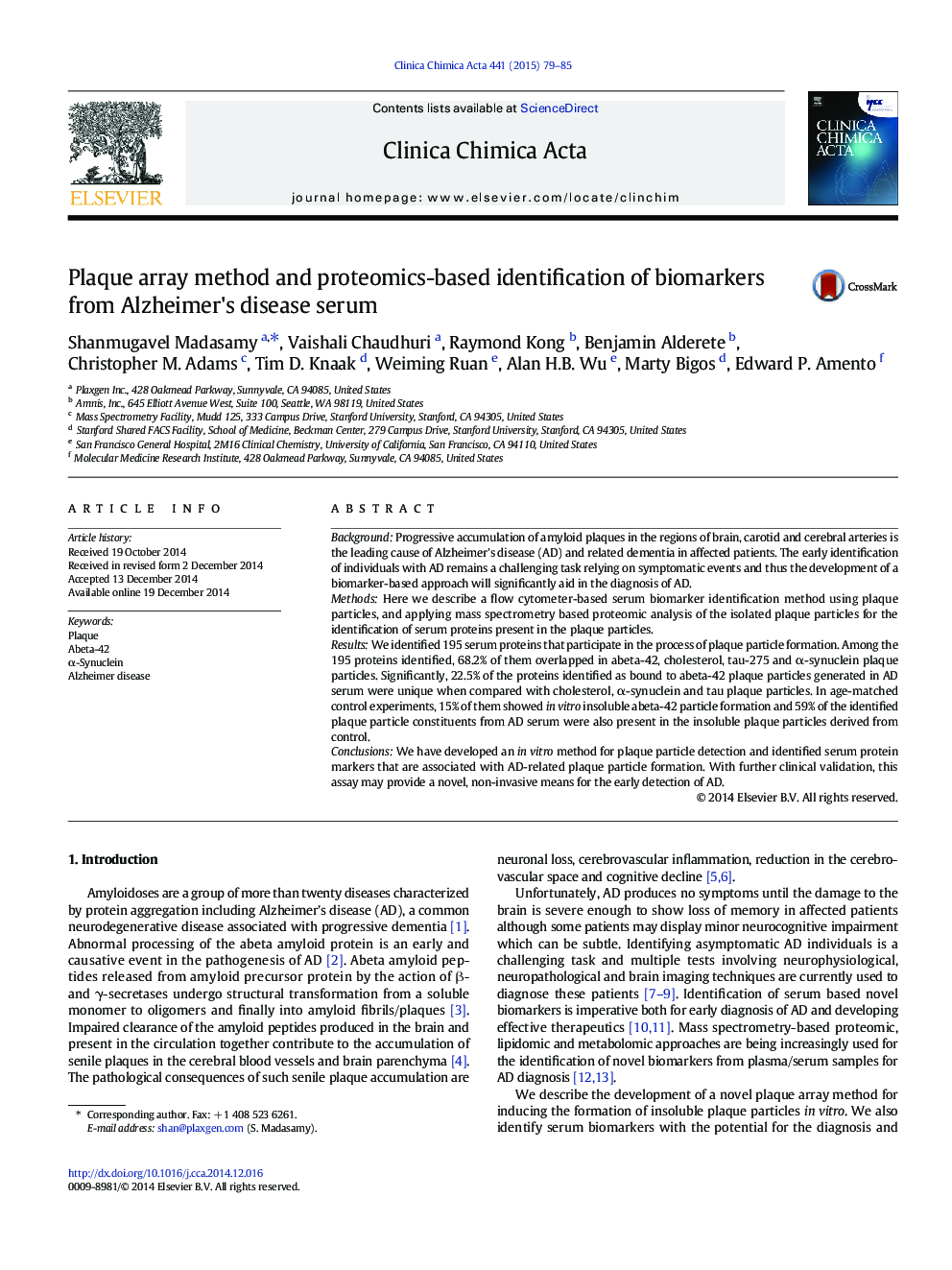| کد مقاله | کد نشریه | سال انتشار | مقاله انگلیسی | نسخه تمام متن |
|---|---|---|---|---|
| 1965346 | 1538657 | 2015 | 7 صفحه PDF | دانلود رایگان |
• Development of a novel plaque array method for detection and characterization of serum derived insoluble plaque particles
• Plaque array is a flow cytometer and proteomics based method for identification of biomarker using Alzheimer's disease serum
• Flow cytometer based identification and measurement of serum induced abeta-42, cholesterol, tau and α-synuclein plaque particles for diagnosis of Alzheimer's disease
• Proteomic analysis of plaque particles show 195 proteins bound to different plaque particles
• Abeta-42 particles contain more specific serum proteins compared to cholesterol, tau and α-synuclein particles
BackgroundProgressive accumulation of amyloid plaques in the regions of brain, carotid and cerebral arteries is the leading cause of Alzheimer's disease (AD) and related dementia in affected patients. The early identification of individuals with AD remains a challenging task relying on symptomatic events and thus the development of a biomarker-based approach will significantly aid in the diagnosis of AD.MethodsHere we describe a flow cytometer-based serum biomarker identification method using plaque particles, and applying mass spectrometry based proteomic analysis of the isolated plaque particles for the identification of serum proteins present in the plaque particles.ResultsWe identified 195 serum proteins that participate in the process of plaque particle formation. Among the 195 proteins identified, 68.2% of them overlapped in abeta-42, cholesterol, tau-275 and α-synuclein plaque particles. Significantly, 22.5% of the proteins identified as bound to abeta-42 plaque particles generated in AD serum were unique when compared with cholesterol, α-synuclein and tau plaque particles. In age-matched control experiments, 15% of them showed in vitro insoluble abeta-42 particle formation and 59% of the identified plaque particle constituents from AD serum were also present in the insoluble plaque particles derived from control.ConclusionsWe have developed an in vitro method for plaque particle detection and identified serum protein markers that are associated with AD-related plaque particle formation. With further clinical validation, this assay may provide a novel, non-invasive means for the early detection of AD.
Journal: Clinica Chimica Acta - Volume 441, 20 February 2015, Pages 79–85
